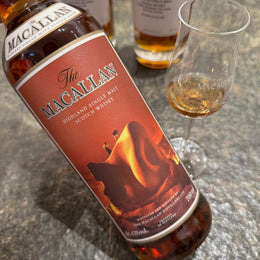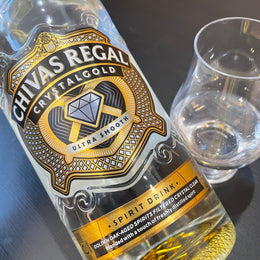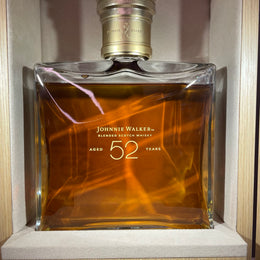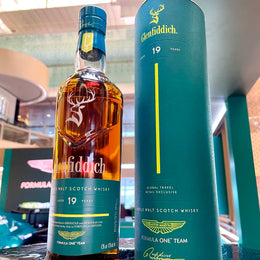The provenance movement gained traction sometime as of late, and ideas of terroir and locality made their way into the consciousness of drinkers; casual and seasoned alike. It's as if that terroir or some elements of locality is to be expected at this point, and only then you deserve the badge of being called a craft distillery.

Arched backs over tabletops filled with sample bottles are a requirement as well (at least, in my short experience at a craft distillery). Source: Bruichladdich
However, while we should celebrate the exploration of introducing local elements into your favourite tipples, I think it's important to note that it's not always that easy, and such feats shouldn't be taken for granted.

Source: Bruichladdich

Bruichladdich, since it's reopening in 2001, has always made it clear that sustainability, traceability and locality is key to their vision in their whiskies. Before that, Islay had close to no barley agriculture going for it - the oceanic climate and soils was just not suitable for growing the grain. At least, that was what was believed. There were records of barley grown on Islay a long time back, however, with bulk production of whisky from the island's distilleries, at some point, growing barley and malt got lost to history.

An aerial shot of Islay. Only 6.5% of Islay's land is plough-able, and currently barley is grown on 0.6% of the island's area, 20 farms combined. Source: Bruichladdich
Sourcing malt from big malt houses was the status quo then - and some distilleries still practice that. There's no shame in sourcing your malt from the pros, even if they're situated outside your country, especially in the face of rising costs and an ever tightening bottom line. You can still achieve great whiskies even if you don't grow the barley yourself! But, when the keys were handed over to the principal founders Simon Coughlin and Mark Reynier early 2000s, the vision was to produce whisky with locally sourced barley - at least, some of it.

Mary Reynier (left) and Simon Coughlin (right. Source: Booze Dancing; Scotsman
To kick off the project, Bruichladdich made it a point to use 100% Scottish malt at the start, partnering with Bairds. In 2003, Bruichladdich released their first ever fully organically grown barley whisky, with malt grown by William Rose of Mid Coul Farms.
![]()
Bruichladdich Organic 2003 Anns An T-Seann Doigh. Source: Whisky Exchange
Islay, the island off the coast of Scotland, wasn't exactly devoid of agriculture. There were some farmers who raised cattle for dairy and beef. When the founders initially approached many of these farmers to pilot barley growing on the island, they were met with disinterest - it was said to be impossible to do so, with varying microclimates even within the same plot of farmland. A farmer rose to the challenge - in 2004, Raymond Stewart sowed the first barley for Bruichladdich at Kentraw Farm - which was then harvested and distilled in the same year.

Source: Bruichladdich
The Islay Barley project has finally yielded its first whisky - Islay Barley 2004 was unveiled to the world six years later in 2010. Since then, Islay has worked with more farmers, distilling single expressions of whisky that made use of only one type of barley from one farm.

Source: Really Good Whisky
So, what has been made of the Islay barley situation? The number of farmers growing barley for Bruichladdich has since increased from Raymond Stewart alone in 2004 to 20 farms across the island. Bruichladdich has also poured lots of resources into the project - from trials of organically grown barley, to experimenting with regenerative agriculture practices and re-establishing ancient varietals (like the Bere Barley here - review coming soon). Cheers to more true-blue Islay whisky!

Source: Bruichladdich
In this Islay Barley 2013 edition, Concerto barley was grown in the following farms: Coull, Rockside, Mulindry, Cruach, Dunlossit and Sunderland farms; distilled in 2013. 75% of the whisky is matured in first fill American whisky casks and the other 25% in second fill wine casks, a combination of Ribera Del Duero, Paulliac and Syrah. The whisky is aged for at least eight years.

I've had the opportunity to try out one of such bottlings in a Bruichladdich tasting held at El Pico, a Cuban-inspired members only club.
Let's have a go!
Bruichladdich Islay Barley 2013, 50% ABV - Review

Nose: Sliced fresh apple, with a musky, cereal bran on the nose, that reminds me of an apple flavoured muesli. Swirling brings out more green apple and acacia honey notes.
Taste: Quite nutty with a malt syrup flavour. It reminds me if oatmeal butter cookies with a dusting of water sugar. There is some green apple skin in the taste as well.

Finish: Slightly more almond nut cereal flakes here. It gets somewhat grassy on the finish, hay-like while retaining a bit of greenness.
My Thoughts:
While still keeping to the usual non-peated Bruichladdich bright and fresh style (with the Classic Laddie as a point of comparison), there is some interesting nuances to the dram, in particular the grassiness. Enjoyable for sure - and I believe is a way to understand another flavour of Islay apart from its more famous peaty side.
Rating: 7.2/10
|
Score/Rating Scale :
|
Read our review of the Singapore-exclusive Micro Provenance Cask #0287 and the Bere Barley 2012!

@vernoncelli







